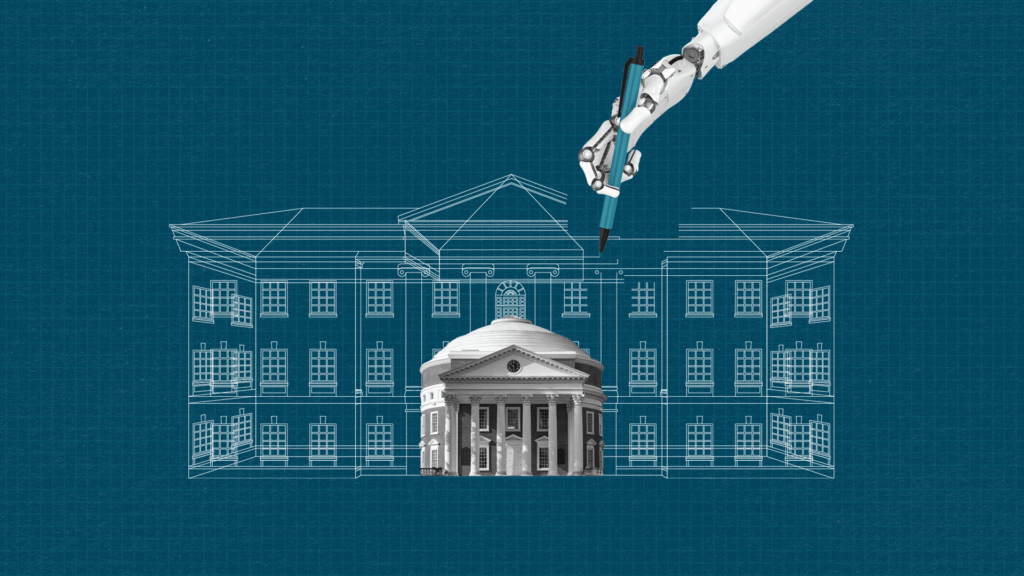By Brandon Martinez, VP of Learning Partnerships
As an adjunct college professor myself, I can’t stress enough the profound influence instructional design has on student success and satisfaction. When instructional methods become stagnant and fail to evolve with the changing needs of learners, a chain reaction of negative consequences is set in motion. Let’s start with the more commonly thought about consequences, such as dwindling motivation and lackluster academic performance. However, as we venture further, we will also shed light on the often overlooked and interconnected repercussions, including retention challenges, unsettling knowledge gaps, career setbacks, diminished satisfaction with the university, a tarnished academic reputation, weakened program competitiveness, and the heartrending reduction or elimination of cherished academic offerings.
Decrease in Motivation
Imagine a learning experience where instructional methods remain unchanged, where lectures are monotonous monologues, and assignments lack real-world relevance. In this environment, students can easily lose their sense of motivation. They may find themselves disengaged, struggling to summon the enthusiasm to actively participate in their learning journey. Let’s underscore the crucial role that dynamic and student-centered instructional design plays in maintaining and nurturing students’ motivation. When instructional approaches fail to adapt to the evolving needs and interests of our learners, the consequences can be disheartening, leading to a gradual erosion of their motivation, enthusiasm, and overall commitment to their education.
Outdated instructional methods can hinder students’ intrinsic motivation, leading to disengagement and decreased effort (Eidenberger & Nowotny, 2022).
To increase motivation, consider implementing the following strategies:
Foster Active Engagement:
- Incorporate interactive learning activities that encourage student participation.
- Emphasize collaborative projects and group discussions to promote engagement and peer learning.
- Provide opportunities for hands-on experiences, simulations, or real-world applications of knowledge.
Personalize Learning Experiences:
- Tailor instructional materials and assignments to match students’ interests and learning styles.
- Offer choice and autonomy in selecting topics, projects, or research inquiries.
- Provide timely and constructive feedback to guide students’ progress and foster a sense of accomplishment.
Create Meaningful Connections:
- Establish a supportive and inclusive learning environment where students feel valued and connected.
- Relate course content to real-life situations, current events, or students’ personal experiences to enhance relevance.
- Encourage open communication and establish mentorship or peer support programs to foster a sense of belonging.
Poor Academic Performance
Stagnated instructional design directly correlates with poor academic performance. A study by Choe et all (2016) revealed that students who reported dissatisfaction with the instructional design of their courses were more likely to perform poorly academically. When instructional materials, assessments, and teaching methods fail to align with students’ learning needs and preferences, it becomes challenging for them to grasp and apply the required knowledge effectively.
As a instructional design leader, ask yourself:
- Are our instructional materials and assessments aligned with the diverse learning needs and preferences of our students?
- Do we regularly seek feedback from students to assess their satisfaction with the instructional design of our courses?
- How can we proactively identify and address any misalignment between instructional methods and students’ ability to grasp and apply knowledge effectively?
Having discussed the relationship between stagnant instructional design and poor academic performance, it’s crucial to explore another significant repercussion, a derivative of academic performance if you will – student retention.
Retention Issues
Stagnant instructional design can contribute to retention issues within universities. When students feel disconnected from the curriculum or struggle to find relevance in their studies, they may be more likely to drop out. According to a recently published article in Behavioral Science (Li, 2023), retention rates are significantly influenced by student engagement and satisfaction with instructional methods. If instructional design remains stagnant, universities may experience higher attrition rates, affecting their enrollment numbers and overall institutional success.
The narrative naturally evolves from the domain of retention issues to another equally pressing concern – student knowledge gaps.
Student Knowledge Gaps
Inadequate instructional design can result in significant knowledge gaps among students. When learning materials and methods fail to adapt to changing trends or incorporate current research, students may graduate without the essential skills and knowledge required for their future careers. This issue is particularly relevant in industries where technology and practices evolve rapidly. A report by the World Economic Forum (2018) highlighted the importance of aligning instructional design with industry demands to bridge the skills gap and ensure students are adequately prepared for the workforce.
Expanding Beyond Academic Offerings
While the focus on instructional design often centers around academic programs, it is equally vital to recognize its impact on non-academic offerings. Corporate education, continuing education, and executive education programs also rely on effective instructional design to provide relevant and valuable learning experiences. Whether it is professional development courses, executive leadership programs, or specialized training initiatives, instructional design plays a pivotal role in delivering impactful learning outcomes. Neglecting to adapt instructional design approaches in these contexts can result in knowledge gaps, inadequate skill development, and limited effectiveness of the programs, ultimately diminishing their value and impact.
By prioritizing instructional design that is agile, relevant, and aligned with industry demands, professionals in corporate education, continuing education, and executive education can ensure that learners acquire the necessary skills and knowledge to excel in their respective fields. Through responsive instructional design, these programs can empower professionals to navigate the evolving landscape, seize new opportunities, and contribute to the growth and success of their organizations (Merrill 2002, 2007, 2019).
This sets us perfectly for the next consequence.
Career Implications for Students
Stagnated instructional design can have long-lasting career implications for students. If they graduate with knowledge gaps or outdated skills, their job prospects may be limited. Employers increasingly seek candidates with relevant, up-to-date knowledge and skills. The Journal of Informatics (Hutson, 2023) emphasizes the importance of instructional practices that develop transferable skills, such as critical thinking and problem-solving, to enhance students’ employability and adaptability in a rapidly changing job market. The article concludes by posing a critical question: How do we cultivate essential human skills within an education system increasingly driven by artificial intelligence (AI)? It underscores the significance of curriculum design and traditional learning approaches in fostering a cohesive learning experience that nurtures enduring skills in students. While AI-driven education brings valuable advancements, it is essential to acknowledge that it cannot supplant the development of human skills. Traditional interactions and methods continue to hold a crucial role in cultivating these vital skills that define our humanity. As we navigate the evolving landscape of education, we must strike a delicate balance between leveraging AI’s potential and preserving the irreplaceable essence of human connection and development.
While we’ve discussed the long-lasting implications on students’ careers due to stagnated instructional design, it’s equally important to draw attention to a related, yet distinct area of impact – their overall satisfaction with the university experience.
Decreased Satisfaction with the University
Ah, the pursuit of knowledge! Students arrive at our esteemed university doors with hopes and dreams, eager for an engaging and transformative educational experience. They crave more than just lectures and textbooks; they yearn for vibrant and dynamic learning environments tailored to their unique needs. Alas, when instructional design falls short of these lofty expectations, the consequences are dire. Uninspiring instructional design can significantly impact student satisfaction with their university experience. Students expect engaging, dynamic learning environments that cater to their individual needs and promote active learning. When instructional design fails to meet these expectations, students may become dissatisfied with their educational journey, leading to negative perceptions of the university as a whole. This dissatisfaction can spread through word-of-mouth, potentially affecting future enrollment and institutional reputation.
When students express their dissatisfaction with a university, they often do so through various channels. Negative word-of-mouth, online reviews and social media, formal feedback channels.
Student feedback is invaluable in improving instructional design strategies. How do you think universities can effectively gather and incorporate student feedback to enhance the educational journey and create a more satisfying experience? Share your insights on feedback mechanisms and collaborative approaches that can empower students to actively participate in shaping their own learning experiences.
As we’ve dissected the potential consequences of decreased student satisfaction due to subpar instructional design, another critical factor comes into view. A factor that not only bears an influence on student satisfaction but also has an overarching effect on an institution’s standing – the academic reputation of a university or its individual programs.
Poor Academic/Program Reputation
Have you ever considered how a university’s academic reputation could be influenced by its instructional design? As someone immersed in the field of higher education and learning design, I frequently ponder this less-explored link.
Higher education institutions, as the cornerstone of knowledge delivery, are habitually gauged on their prowess to impart quality education. It’s in this context that the role of instructional design becomes paramount. It’s not simply a backstage player, but a key performer that can dramatically shape the success of a university or its individual programs. However, a cautionary note rings clear. If our instructional design turns complacent, failing to keep pace with the ever-evolving educational standards or if it lags behind our esteemed counterparts, it may inadvertently cast a shadow on our institution’s stellar reputation. The cascading effects of this could extend to our academic rankings, further eroding our institutional prestige. Students and potential employers may question the value and rigor of degrees obtained from institutions with a reputation for outdated instructional approaches.
The lesson here is clear: we must be ever vigilant, constantly reassessing and refining our instructional design strategies.
Diminished Program Competitiveness
Navigating through the labyrinthine higher education sector is no less than a game of competitiveness. A key player in this game, often overlooked, is instructional design. Prospective students consider various factors when choosing a university, including the quality of instruction.
What happens when a program is no longer competitive? Let’s look at the last consequence of stagnated instructional design.
Reduction or Elimination of Offerings
Ultimately, the consequences of stagnated instructional design can culminate in the reduction or elimination of academic offerings. When programs fail to meet enrollment targets or maintain student interest, universities may need to make difficult decisions regarding program viability. Such reductions can limit educational opportunities for both current and prospective students, impacting the institution’s mission and its ability to cater to a diverse range of educational needs.
Conclusion
In conclusion, we must acknowledge that static instructional design can ignite a domino effect of formidable challenges for our universities and the students they serve. This cascade can range from dwindling student motivation and compromised academic performance to increased dropout rates, knowledge voids, and a loss of program competitiveness. The ripple effects are, indeed, far-reaching and profound.
However, the responsibility to mitigate these consequences lies squarely with university leaders. It is imperative for these stewards of education to place due emphasis on a ceaseless cycle of evaluation and enhancement of instructional design strategies. The goal should be unequivocal: providing students with an education of the highest quality that not only meets but anticipates and prepares them for the challenges of an ever-accelerating world.
In the final analysis, it is our collective commitment to a forward-thinking and innovative approach to instructional design that will enable us to achieve this goal and ensure our universities continue to thrive in a rapidly evolving educational landscape.
About the Author:
Brandon Martínez, VP, Learning Partnerships Linkedin Brandon joined Noodle, the leading strategy, services, and technology partners serving higher education, after working at the University of Southern California’s Rossier School of Education as an Assistant Professor of Clinical Education and as the Principal of one of the largest and highest-performing high schools in northern Orange County, California. In his role at USC, he helped design, build, and teach in the MAT@University of Southern California program and the Ostrow School of Dentistry. He has also taught in the on-campus Ed.D. and the online Ed.D. in Organizational Change and Leadership.
Want to get in touch with Noodle? Fill out the form below and we’ll connect.



